-
Posts
309 -
Joined
-
Last visited
-
Days Won
36
Content Type
Profiles
Forums
Gallery
Events
Articles
Blogs
Downloads
Posts posted by V7#5b9
-
-
So Gibson moved their ES line from Memphis back to Nashville in order to streamline production and focus on quality. Well, I thought I would never get one until now. The new generation ES line seems promising. I mean it has to be since there are so many great alternatives, and I own a couple. But I thought I couldn’t go wrong with the real ES-335 this time. The amount of precision that goes into making the guitar these days, thanks to modern technology and machinery, should make the instrument as good as it can be. Right?
I took a chance and got one. Nothing fancy, satin finish which makes the guitar less expensive. I got an extra deal on it, too. It’s equipped the same as the higher models with more frills. The new T-Type pickups are really a modern version of T-Tops from the mid 60s and 70s. They really fit the vibe of this semi-hollow guitar and give it a warn, creamy sound. I love that. I was a little worried about the neck profile and how chunky it may feel. However, even though it has a little more meat to it than my usually preferred slim taper neck, it actually feels great. The rounded C neck makes it a joy to play. I realize the satin finish will develop shiny patches in high touch areas over time, but I’m OK with that.
Now, is it better than my less expensive alternatives (D’Angelico EX-DC and Sheraton II Pro)? I have to say YES. The Gibson ES-335 is better, but the alternatives are pretty close. Each guitar has its own character, but put the same electronics in say the Epiphone and chances are you won’t hear the difference. And yet there’s nothing like the real deal, is there?
-
 3
3
-
-
A stunner she is, congrats Mike!
-
-
-
I wonder if Frank Vignola has adapted these exercises from the book called “Thesaurus of Scales and Melodic Patterns.” This book originally published in 1947, was written by Nicolas Slonimsky (1894 – 1995), a Russian-born American conductor, author, pianist, composer and lexicographer.
It is said Coltrane and other seminal jazz musicians derived a wealth of ideas for their solos from it. Richie Zellon came up with “24 Permutations of a 4 Part Chord Arpeggio” as well as their application in the formation of new jazz improvisational vocabulary. The system is included with Richie’s BGIS course. Alternatively, it is available as a mini course for $12 at https://jazzguitar.richiezellon.com/ Membership is free.
-
On 12/31/2019 at 9:34 AM, Magnit said:
How do you figure out which chords to harmonize a mode with?
Modal harmony has its peculiarities. In case of the five (variously referred to as) “Greek Modes,” “Church Modes,” or “Jazz Modes”: Dorian, Phrygian, Lydian, Mixolydian, and Locrian, you can’t establish mode defining tonality using harmonic scale (scale of chords) due to problems with the V7 – I progression, and some other harmonic incongruities. In other words, you can harmonize any one of the five modes, but you will find problems with the strongest and tonality defining V7 – I cadence. So, the trick is to combine modal melody with standard major-minor (Ionian-Aeolian) chord progression.
Suppose you use the three principal chords in the key of D major (D, G and A7). The notes that make up those chords are: D E F# G A B C# D. Now suppose you write a melody using only the notes of the Dorian mode: D E F G A B C D. Two of the melody notes, F and C, will clash with the notes of the three principal chords. Those two notes are chromatic – they don’t belong to the key of D major. In order to preserve the Dorian mode feel, it’s important to avoid any instances of F# and C# in the melody.
Furthermore, any modal scale can use any of the 12 chromatic notes as the tonic note. For example, the Dorian mode scale can start and end on the note E, provided you preserve the order of tones and semitones that defines the Dorian mode: tone, semitone, tone, tone, tone, semitone, tone. So, if you begin on the note E, the Dorian scale would be E F# G A B C# D E, and you would play the chords of E major: E, A and B7.
On the other hand, just because modal harmony doesn’t work the same way as the major scale one, it doesn’t mean it’s completely useless. In the context of minor scales, the Dorian mode is frequently used as a key-centre scale with its own scale harmony. In the Dorian scale harmony the IV chord gets a dominant seventh quality. In jazz, modal cadences are used as modal reharmonization techniques.
-
Intervals
Distance between two notes. There are consonant intervals and dissonant intervals. They’re divided into two categories based on acoustic properties. The consonances are actually divided into two groups themselves.
Perfect Consonances
- Unisons
- Octaves
- Fifths
- Fourths
The math and tunings of these intervals work out perfectly. That’s why the Fourths & Fifths are called “Perfect.”
Imperfect Consonances
- Thirds
- Sixths
They can be slightly sharp or flat. The math didn’t work out perfectly for those intervals, but they're still consonances.
Dissonances
- Seconds
- Sevenths
- Diminished
- Augmented
The study of consonance and dissonance, and music in general, is crucial to understanding how music works. Classical composers were very careful about how they introduced dissonance and how they resolved it. The study of this is called counterpoint.
-
 4
4
-
-
It is rather difficult to explain all the benefits of fretboard visualization techniques in a simple post. As the above-mentioned article alludes, it’s highly unlikely that any beginner would realize that the E, A, and D are identical in construction and voicing. But, this is only the tip of the iceberg.
CAGED system is one such technique, but it depends on how far one is willing to take it. Learning shapes without studying their anatomy, may or may not be enough, depending on the players goals.
Learning chord shapes, formulas, intervals, spellings, etc., is part of the deal. Beginner courses don’t even mention how visualizing the fretboard from the perspective of string sets can enhance your understanding of it. And there’s so much more …
-
If you are interested, the following article by Howard Morgen gives additional insights with regard to the guitar’s irregular, unequal standard tuning.
-
 1
1
-
 5
5
-
-
I’ve been using courses by Griff Hamlin, TrueFire and Richie Zellon. I respect the reasoning behind sticking to a core instruction, but eventually one may want to expand one’s horizons. Granted, it does require the effort of charting one’s own plan or learning path, but I’m okay with that. On the other hand, there could be other reasons, too. For instance, I found that Steve's Blues course covered a lot of ground, but I needed more spoon feeding so I switched to Griff's BGU. Griff has a series of courses tailored to blues and he touches on details one can probably only get through private one-on-one sessions. For someone like me who relies on video and textbook courses only, more explanation was/is necessary.
-
 1
1
-
-
Sorry guys, but I find it a little strange how a thread can prompt so many seemingly related, yet irrelevant responses, while some other threads with relevant information prompt so few of them. Then again, it’s the Open Talk section, so there’s some grey area here.
On the topic, I have the White Album on old vinyl as well as part of the remasters collection on CDs. However, I’m not catching the bait every time they come up with an “up-sell” scheme. Thanks for the article @Plantsman13. Some interesting info in there.
-
2 hours ago, Triple-o said:
This Jazz language concept hasn’t made sense to me yet. I find it strange every Jazz book I pick up talks about it, but none has dedicated even one sentence to expand on
One university Jazz teacher said he couldn’t define it. He was concerned because all his students sounded the same, because they spend all their time copying Jazz legends. Another teacher quoted Lennie Tristram “don’t let an over emphasis on language limit self expression,make music your own.
I read about a medical study where two jazz musicians were “trading fours” while one was in an MRI machine. It clearly showed that they used parts of their brain that are triggered by a spoken language, but not a tied to a spoken meaning. Oh yea, he was using a plastic keyboard and the medical facility was John Hopkins.
One thing I know for sure. I can’t order a pizza speaking Jazz.
Well then… I guess it doesn’t matter if I say that Richie Zellon does expand on the language concept.
I’ll give you a few examples. Cells and/or motifs can be grouped and developed into phrases. A cadence in music syntax is the equivalent to a sentence in spoken language. Several cadences chained together form a musical paragraph. Cadences can be classified as weak or strong, a weak cadence is like a comma, a strong cadence is like a period.
Richie himself admits that college failed to teach him how to improvise. That’s why he had to take lessons from the pros. As a result, he is not only a better jazz improviser, but also a better jazz guitar teacher.
If a teacher just tells you to use and experiment with the mixolydian mode over a dominant 7th chord without further explanation, you will have a hard time developing a coherent line. On the other hand, if you learn the jazz language, you will be able to develop a coherent line from scratch.
I suppose music colleges do a better job these days, but if a student just learns the same licks as others, and uses a plug-and-play idea without developing his or her own ideas and style, he or she will sound like all the other students.
Anyway, I wouldn’t order a pizza speaking jazz, either.
-
 1
1
-
-
Andrew Wasson delivers the formal explanation. The first 5 minutes of the video provide the essence, the rest is just promotional stuff.
The second video is interesting because it provides correct observations with regard to the standard tuning itself. However, I know nothing about Eric Blackmon, and I wouldn’t call his explanation a formal one. In my mind it does not qualify as the correct one, but it does serve as a good supplement. Apparently, YouTube does not allow embedding of this video, so you will have to use the link itself.
-
 3
3
-
-
On 11/7/2018 at 2:44 AM, FThomas said:
"Recognition of the half step (one fret) expansion that must occur between 3 & 2 to equalize the interval relationships between all of the adjacent strings is the key factor in understanding how
and why all chord shapes, as well as scale patterns, appear as they do across the entire fingerboard."Quoting from Fingerboard Breakthrough by Howard Morgan
I fully concur with the quote.
-
32 minutes ago, Triple-o said:
I can see that trying to write something Clever has backfired. Here is a translation of what I was trying to say. “Improvising is like speaking off the cuff, which is easy enough when you know your topic well. Knowing the chord progression is like knowing your topic”. Jane Miller, guitarist, professor at Berklee College of Music
You still need to know the language, its grammar and vocabulary. Even when you speak off the cuff you repeat phrases you have used many times before. You seldom come up with something completely original. The speech may sound original, but not its components. The same is true of musical improvisation.
If you listen to your favourite players really carefully, you will begin to hear similar licks repeating throughout their solos. This is not immediately obvious because these players manipulate their phrasing, rhythm and feel very well. After all, there are only 12 notes available. The only logical conclusion is that it is rhythm, phrasing, dynamics and articulation that make the difference. In a blues guitar solo where you may be playing only 5 or 6 different notes, it is even more evident. It’s very much a case of when and how you play, not what you play.
-
 2
2
-
-
On 10/29/2018 at 1:01 AM, FThomas said:
Joseph Alexander is an amazingly prolific writer. I have his books on Jazz, Blues and Fingerstyle Blues as well as other titles. Each are very well written. I was not as impressed with his "Scales in Context" where the context is the CAGED System. It makes sense if you rely on the CAGED System for all of your chords. For chords and a better understanding of how the fretboard is layed out I really like "Fingerboard Breakthrough" by Howard Morgen. It is available at TrueFire and his website, which is maintained by his wife since he passed away.
I’ve looked at Howard Morgen’s “Fingerboard Breakthrough” before. It’s an advanced approach, but so is Pat Martino’s “The Nature of Guitar” which I do have. One should not shy away from those approaches, but I think that the CAGED system should not be ignored, either. In fact, I think it’s a good idea to learn it first. You seem to be familiar with it, but your comment appears to imply its inferiority. Sorry if my interpretation is wrong. I just want to point out that the CAGED system is neither inferior nor superior.
Such greats as Joe Pass, Tal Farlow and Barney Kessel endorsed it, and guess what! FundamentalChanges recently put out the book by Martin Taylor called Beyond Chord Melody. He never had what you might call a “formal” guitar lesson, but when he came across the CAGED system he realized that it was an accurate summation of how he views the guitar.
Of course, you don’t have to use it just because so-and-so did or does. However, like it or not, name it CAGED or something else, that’s how the guitar’s fretboard is naturally laid out. Granted, the same may be said about other systems or approaches.
-
Griff has excellent blog entries. He even has a course on how to improvise blues solos. But, improvisation is more of a jazz domain. Head over to the Music Theory section and check out Improvising Over Chord Changes.
-
The following free resource material comes from Richie Zellon’s YouTube channel and his personal website. I think it will clear up any misconceptions one might still have about jazz improvisation. Even if you are not into jazz and improvisation, you may still find the information interesting and enlightening.
Overview Of Special Considerations…
I. We must have a proper understanding of all the chord-scale relationships within the harmonic progression we wish to improvise over. In brief, this means we must understand the function of each note in a scale in relationship to its offspring chords as well as the overall tonality at hand (e.g. major, minor, modal, etc).
Remember all notes fit into one of 2 categories: harmonic tones and non-harmonic tones. To summarize:
A. Harmonic Tones include all chord tones and upper extensions diatonic to the scale of the moment.
B. Non-Harmonic Tones include any “avoid notes” diatonic to the scale of the moment and all non-diatonic chromatic notes.
II. When we improvise a melodic line we are dealing with both a vertical and horizontal relationship to the current harmonic progression. The development of a good sounding phrase fully depends on an understanding of how these 2 aspects within your line interact with the moving chords.
VERTICAL: When improvising over a given chord we should be primarily focused on outlining the most important harmonic tones of its mother scale. Thus our melodic line for most of the time takes on the shape of a gradually ascending and descending vertical structure also known as melodic contour. A good example of a vertical structure would be a 7th chord arpeggio.
HORIZONTAL: A good example of horizontal movement takes place whenever we play a scale or any succession of notes in step-wise motion. Therefore, unless we are playing lines consisting exclusively of 3rds or larger intervals, there is an ongoing balance of horizontal and vertical movement in our melodies. However note that at the point of transition from one chord to another , our primary focus usually shifts from vertical to horizontal as we must connect both structures in a seamless linear fashion. This is what is referred to as voice leading and is best accomplished by resolving to the closest guide tone (ie. 3rd or 7th) of the new chord. Consequently the smoothest transitions employ step-wise motion.
The following videos constitute a four-part tutorial on how to use “The Jazz Guitarists Signature Series” to expand your improvisational vocabulary. You will undoubtedly see that improvisation goes beyond the simple memorization of licks and the plug-and-play idea. There is even an element of spontaneity in it, but for the most part, it comes from what you learn in the practice room.
If you had the patience and tenacity to come this far in this post, I’ll throw at you one more video as an example of phrases (licks) deconstruction and usage.
All this material is available for free, and I’m sure it will complement any improvisation study materials you may already have, like the ones recommended by Steve. If however, you find your materials insufficient in some areas, Richie has an excellent, college level, two-volume series on improvisation.
-
 1
1
-
-
??? … and in the spirit of blues, they are all dominant 7th chords.
-
The 12-bar blues form serves as a springboard for “Day Tripper.” The verses begin with two four-bar phrases that follow the typical poetic, harmonic, and instrumental guidelines of the blues. Actually, I can hear the common call and response pattern of blues phrasing in the melody, while the ostinato riff opens and unifies the whole song. The third phrase is extended to eight bars, and in my mind serves as a punch line.
-
Call and Response is a common pattern of blues phrasing. This concept is not only present in vocal blues, but also in the development of many instrumental blues solos. So you can definitely have a conversation with yourself in your own improvisation.
It doesn’t have to be in the context of a 12-bar blues, but some sort of symmetrical form is helpful. Many tunes have four- or eight-bar sections that can easily be divided into one-, two-, or four-bar chunks for the purpose of call and response.
One way to do this on a 12-bar blues form is to treat each third of it as a small three-phrase segment. That is, a short, rhythmically similar phrase is played in each of the first two bars, while the next two bars contain a longer line that seems to answer the first two. This repeats for both of the remaining four-bar segments.
Another device within the framework of call and response is to jump between higher and lower registers. This range jumping idea can be applied to a tune with more chord changes and a swinging rhythm. It’s a good effect to use sparingly.
Call and response was a prominent feature of the musical environment that helped to shape the jazz style and continues to appear throughout the tradition in compositions and in solo statements.
To get a better sense of this concept follow the link: Five Types of Call and Response Phrases.
-
 1
1
-
 1
1
-
-
I have just upgraded to the latest 2018 BIAB version. So far I’ve been using it mainly for the etudes in Richie Zellon’s BGIS course. I find it a very versatile tool. The RealTracks are outstanding, and so are the backing tracks you can quickly and easily create for yourself. However, the versatility goes way beyond simple backing tracks. The $130 basic package is probably more than enough for most of us. I think BIAB has become one of those must-have tools for some time now.
-
13 hours ago, Triple-o said:
I always thought that this was a pretty good guitar course. The one session I always thought didn’t belong was session 18. Jazz, don’ you need a masters degree in music to learn Jazz. Now I’ve changed my mind. The more time I spent trying to master the blues solo the more I realize some of the answers to improve my solo can from from Jazz. One way to improve your solo would be by adding tension and resolution to your solo.Where is one of the best places to learn more about this subject, that’s right Jazz.
Let’s not forget that jazz evolved from blues and not the other way around. You can improve your traditional blues playing without knowing anything about jazz. It’s more about the blues scale, phrasing, using bends, hammer-ons and pull-offs. On the other hand, if you want to enhance your blues playing, you will move from Traditional Blues to Jazz Blues to Minor Blues to Bird Blues.
-
 2
2
-
-
10 hours ago, colder said:
I just wish more jazz books were written for people who can't read music, but maybe I just need to learn

More and more books tend to use both regular notation and tab. But, there is one resource that goes a step further. It’s called Bebop Guitar Improv Series. The study includes a notational system occasionally referred to as intervallic script. It is in no way meant to be a substitute for traditional music notation. The main purpose of intervallic script is to serve as a system of staff-less notation, to analyze and memorize melodic phrases in numerical formulas that can easily be recalled, transposed and applied to any key as improvisational vocabulary.
In addition it has proven to be an invaluable system in training the mind to visualize the components of a scale and their melodic function in relationship to a given chord. This is a crucial resource when improvising, due to the fact that it is much more practical to think in transposable numerical patterns rather than actual notes.
Intervallic script has its limitations, of course, therefore conventional notation and tablature are used throughout the study as well. If you are not a proficient reader, your best next option is to use both the regular notation and tab.

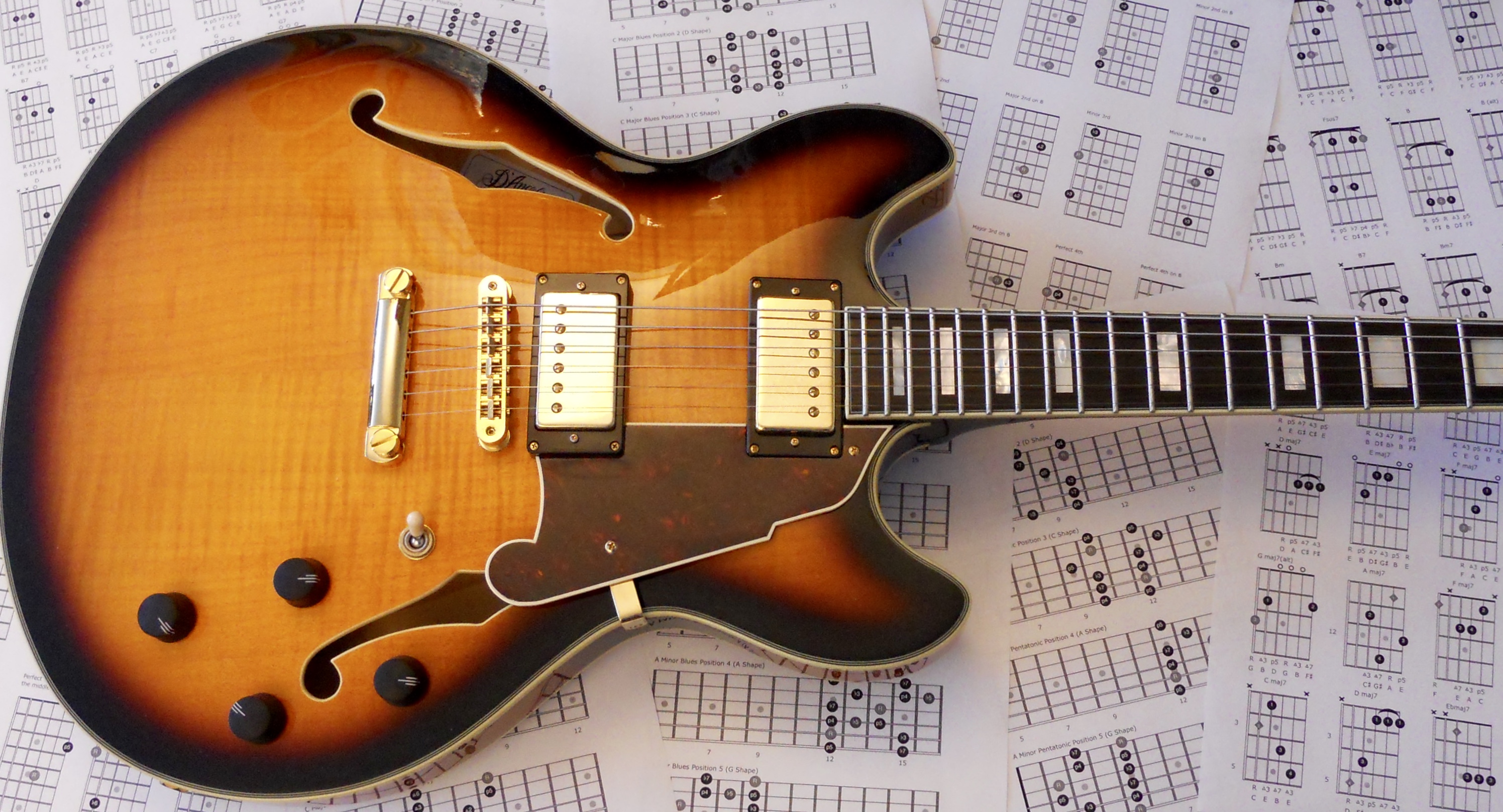
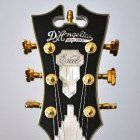
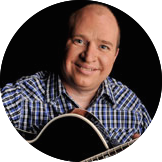
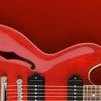
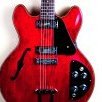

NGD 2020 Gibson ES-335 Satin Cherry
in Guitar Gear, Amps, Effects, Pedals
Posted
No regrets here, either.